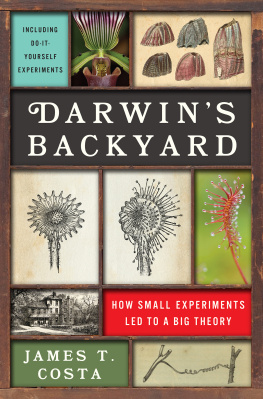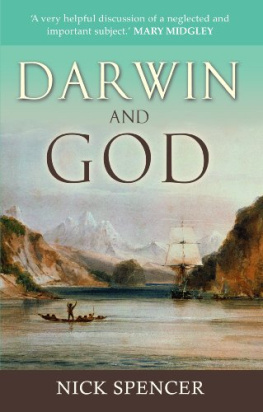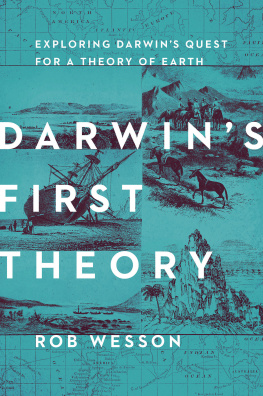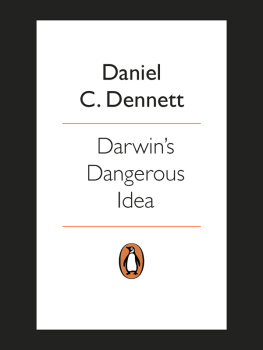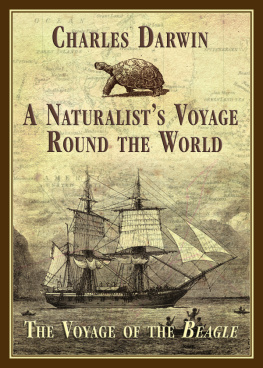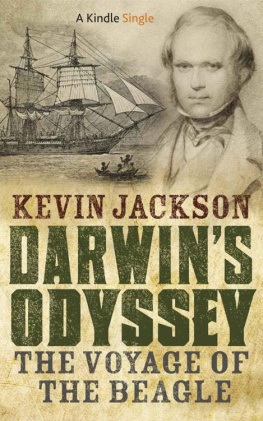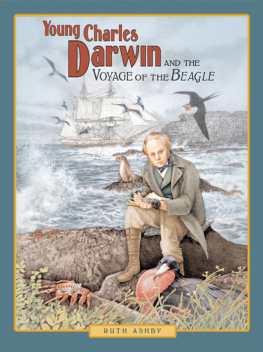
ALSO BY JAMES T. COSTA
Wallace, Darwin, and the Origin of Species
On the Organic Law of Change:
An Annotated Transcription of Alfred Russel Wallaces
Species Notebook of 18551859
Highlands Botanical Garden: A Naturalists Guide
The Annotated Origin: A Facsimile of the
First Edition of On the Origin of Species
The Other Insect Societies
DARWINS
BACKYARD
HOW SMALL EXPERIMENTS
LED TO A BIG THEORY

JAMES T. COSTA

W. W. NORTON & COMPANY
Independent Publishers Since 1923
NEW YORK LONDON
The experiments described in this book are not intended for use by children. Readers are cautioned to use common sense when undertaking any experiment. Use of appropriate tools and protective gear is essential, as is knowledge of ones own limits and abilities. References to specific products, services, service providers, and/or organizations are for illustration only and none should be read to suggest an endorsement or a guarantee of performance. Neither the publisher nor the author can guarantee the accuracy and completeness of this book for all purposes or make any representation with respect to the outcome of any project or instruction described. Web addresses appearing in this book reflect existing links as of the date of first publication. No endorsement of, or affiliation with, any third-party website should be inferred. Author and publisher are not responsible for third-party content (website, blog, information page, or otherwise). This book is sold without warranty of any kind, and none may be created or extended by sales representatives or written sales or promotional materials. Readers are solely responsible for ensuring that their activities comply with applicable law.
Copyright 2017 by James T. Costa
All rights reserved
First Edition
For information about permission to reproduce selections from this book, write to Permissions, W. W. Norton & Company, Inc., 500 Fifth Avenue, New York, NY 10110
For information about special discounts for bulk purchases, please contact
W. W. Norton Special Sales at specialsales@wwnorton.com or 800-233-4830
Book design by Helene Berinsky
Production manager: Anna Oler
JACKET DESIGN: Chin-Yee Lai
JACKET ART: (wooden case) Marekuliasz / iStockphoto.com; (slipper orchid) Harry Laub / Getty Images; (barnacles) John George Sowerby (18761914) / Natural History Museum, London, UK / Bridgeman Images; (Drosera Rotundifolia) Figures 4 & 5 from Insectivorous Plants by Charles Darwin. John Murray, 1875 / Wellcome Library, London; (oblong-leaved sundew) Erhard Nerger / Getty Images; (Darwins home at Downe, Kent) Chronicle / Alamy Stock Photo; (Bryonia Dioica) Figure 13 from On the Movements and Habits of Climbing Plants by Charles Darwin, 1865 / Journal of the Linnean Society of London
ISBN 978-0-393-23989-8
ISBN 978-0-393-24915-6 (e-book)
W. W. Norton & Company, Inc., 500 Fifth Avenue, New York, N.Y. 10110
www.wwnorton.com
W. W. Norton & Company Ltd., 15 Carlisle Street, London W1D 3BS
DARWINS
BACKYARD
For Randal Keynes
Darwin-inspired friend and mentor
We can only imagine that Emma Darwin had the patience of Job. At one point in the 1850s, sheets of damp paper stuccoed with frog eggs lined the hallway of her house, pigeons cooed boisterously in a dovecote in the yard, row upon row of glass jars with saltwater and floating seeds filled the cellar, and malodorous pigeon skeleton preparations permeated the air. And that was only the beginning: there was a terrarium of snails with suspended duck feet, heaps of dissected flowers, and the fenced-off plots in the lawn where the grass was carefully scraped away to study struggling seedlings. Of course, being married to Charles Darwin over a dozen years by then, she was undoubtedly used to it. Charles, she might have said to friends, was experimentising again.

Down House, Darwins home of 40 years in Kent, south of London. Photograph by the author.
Darwins experimentising, which appeared to some as merely the odd pursuit of an eccentric Victorian naturalist, turned out to push the envelope on hisand ourunderstanding of the biological world and our place within it. Darwin was laying the empirical groundwork for key elements of his revolutionary ideas on evolution.
This book introduces a Charles Darwin that few people know. His evolutionary ideas were not pulled out of thin air. He was an observer and experimentalist, and his clever and quirky investigations were not the schemes of some solitary eccentric sequestered in a lab. No, Darwins home was his laboratory, and his and Emmas large family of seven surviving children often worked with him as his able field assistants. Darwin even published with his kids, in a fashion: the very year On the Origin of Species was published, a notice on rare beetles appeared in the Entomologists Weekly Intelligencer by Darwin, Darwin, and Darwinthe authors being sons Franky, Lenny, and Horace, ages 10, 8, and 7, written with a wink by their proud dad on their behalf. He also had a talent for roping the butler and governess into his field studies, along with his cousins and nieces. He signed up legions of friends and strangers alike to make observations, try experiments, send him specimens, and serve as sounding boards. Yet, while Darwin may be a household name and his work equally well known, most are unfamiliar with Darwin the scientist, let alone the person.
His landmark books are appreciated as astonishing compendia of information, yet even many Darwin enthusiasts have little sense of Darwin the inveterate observer and correspondent, ingenious synthesizer and experimentalist, or family man. The rich array of experimental projects carried out by Darwin and his family reveal a very differentvery humanside of a person too often seen as a cardboard icon. Whether enthusiastically taking up one sons suggestion to test the viability of seeds in the crops of dead birds, staking out and chasing oddly buzzing bumblebees in the garden, or venting his frustration to friends over uncooperative fish spitting out the seeds he was trying to feed them, Darwins experiments are often humorous and always instructive. They may have been fools experiments, as he liked to call them, but as a Darwin friend pointed out, fools experiments conducted by a genius often prove to be leaps through the dark into great discoveries.
Through his experiments and other investigations Darwin systematically gathered data testing his evolutionary ideas. Beginning with his geological works of the 1840s, his experimentising and other pursuits provided invaluable material that bolstered his arguments. His pace picked up considerably in the 1850s, when his experiments became behind-the-scenes efforts to look into nature as no one had before, through the lens of evolution and natural selection. Darwin referred to the Origin of Species as one long argument, but we should step back and consider his entire post-Origin opus in precisely the same way: one longer argument. After the Origin, he published myriad papers and some 10 books: on orchids, domestication, human evolution, climbing plants, animal behavior, carnivorous plants, flower structure, and earthworms. The topics are far-ranging yet all of a piece in support of a grand vision, many involving a prodigious number of homespun experiments and other projects.
Next page
